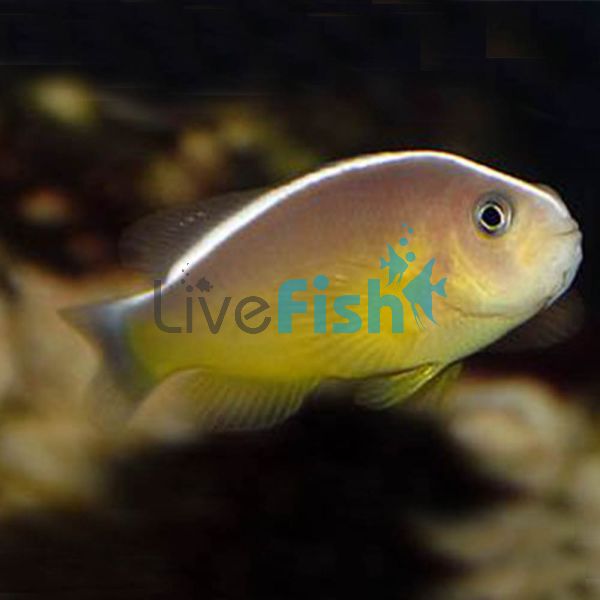Orange Skunk Clownfish - Medium
The Orange Skunk Clownfish has a beautiful colour and a bold stripe. It is easy to keep and great for a reef, making it an ideal purchase for beginner aquarists.
Skunk Clownfish get their name from the white, “skunk-like” stripe. This runs from the front of its head down the length of its back. The rest of the body and head is orange, and the fins are translucent. However, the tailfin becomes more orange as the Clownfish matures. This is one of the smaller species of Clownfish. Females are larger and can reach a length of 4.3 inches (11 centimetres). Males usually grow up to 2.6 inches (6.5 centimetres).
Breeding can take place in a home aquarium fairly easily. Eggs are deposited on a flat surface in the tank and will be guarded from other tankmates. Eggs usually hatch within 6-10 days and will need to be moved to a separate tank for rearing. Orange Skunk Clownfish are sequential hermaphrodites. In a social group, the female will be the biggest and the breeding male second largest. Non-breeding males decrease in size the further down the hierarchy they are. If the female dies or is removed from the group the breeding male will become female. The biggest non-breeding male then becomes the breeding male of the group.
This species can be found in the Coral Triangle which is in the centre of the Indo-Pacific region. Countries such as Indonesia, the Philippines, and New Guinea are part of this area. Other areas it inhabits include Southern Japan, Christmas Island, and Northern Australia. Orange Skunk Clownfish live on reefs or in lagoons in small groups at depths of up to 20 metres.
Tank Recommendations for the Orange Skunk Clownfish
A suitable tank should be at least of 30 gallons (113.6 litres) capacity.
This species is reef safe and well suited to this type of aquarium. There should be plenty of rockwork and hiding places.
It forms a symbiotic relationship with its host anemone. Including one in the tank will make them more comfortable, but it is not essential.
Suitable Tank Buddies
The Orange Skunk Clownfish is a semi-aggressive species. However, this is usually confined to conspecifics or similar species.
They will benefit from being kept in a pair with a host anemone.
Usually Compatible
Orange Skunk Clownfish can cohabit with a variety of fish. Suitable companions include. Batfish, Angelfish, Tangs, Wrasses, Rabbitfish,
Sometimes Compatible
Aggression may be shown to conspecifics and similar species. Caution also advised with Triggerfish and Hogfish. It is possible for different varieties of Clownfish to cohabit. But they need to be introduced at the same time.
Rarely Compatible
Larger, aggressive fish may harass the Orange Skunk Clownfish. Avoid Frogfish, Groupers, Eels, Lionfish, Sharks and Rays.
Feeding Your Orange Skunk Clownfish
The Orange Skunk Clownfish is an omnivore. A suitable diet should include brine shrimp, mysis shrimp, and herbivore preparations. It will also consume flake foods and pellets. Feed small amounts 2-3 times per day.
| Scientific Name | Amphiprion sandarcinos |
|---|---|
| Care Level | Easy |
| Common Names | Orange Skunk Clownfish, Skunk-striped Anemonefish, Yellow Skunk Clownfish, Yellow Clownfish. |
| Diet | Omnivore |
| Fish Family | Pomacentridae |
| Lifespan (years) | 4 |
| Max. Length (cm) | 11 |
| Min. Tank Volume (l) | 114 |
| Origin | Indo-Pacific/Coral Triangle; Indonesia, the Philippines, New Guinea, Southern Japan, Christmas Island, Northern Australia, or captive-bred. |
| Reef Safe | Yes |
| Sociability | Semi-aggressive |
| Venomous | No |
| Water Conditions | 22.2-25.5°C (72-78° F), dKH 8-12, pH 8.1-8.4, sg 1.020-1.025 |




